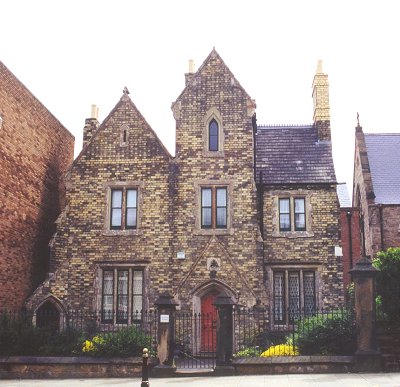The conflict within (part 1)
The clergy versus the laity
The attempt by the Catholic clergy to establish its dominance over the
laity has been the subject of much recent discussion [Bossy op cit pp.
323 – 326, Aveling op cit pp. 322 – 346] for it seems clear that the
great transformation that was taking place within the Catholic Church in
Britain was upsetting the balance of power. In 1770 the Roman Catholic
community was still dominated by its secular aristocracy, but the
Catholic gentry, like English gentry in general, was gradually losing
its demographic, economic, social and political supremacy. Some families
were simply disappearing through their inability to produce a male heir,
while others were deserting Catholicism to join the ranks of the Church
of England, a local example being Peter Giffard, who became an Anglican
in 1786. [Bossy op cit p. 324] The exodus of Catholic labourers and
their families from rural areas, and the increasing immigration of Irish
to the manufacturing towns, helped further diminish the influence of the
Catholic gentry.
This process was aided by the appointment of John Milner to the
position of Vicar Apostolic of the Midlands District in 1803. Although
Bishop Milner became the declared opponent of the aristocratic
predominance of the Catholic community, this did not mean that he was a
liberal; indeed, he was quite the opposite, continually expounding the
Catholic principles of episcopal authoritarianism as divine law, "and
condemning the democracy of the liberals as mad and heterodox". [Aveling
op cit p. 340] In his twenty three years as Vicar Apostolic, Milner
effectively presided over the subjugation of the Catholic gentry and
aristocracy by the clergy. Bossy argues that "by about 1820 the tension
between the clergy and the third estate over congregational institutions
had reached a point of balance". [Bossy op cit p. 347].
The conflict that existed within the Wolverhampton Catholic community
was to some extent a reflection of a national struggle, but it was also
the result of clashes of personality between certain members of the
laity and clergy in the area.
 |
The Presbytery of SsMary
and John's Church, Snow Hill, today. |
Father Patrick O'Sullivan, who came to SS Peter & Paul's chapel in 1830
and who became, perhaps, the dominant Catholic priest in the town for
most of the period under review, was involved in a number of
controversies with colleagues. O'Sullivan's superior, Bishop Walsh, was
not particularly impressed by the way in which the Irishman carried out
his duties as parish priest and was considering, in the early months of
1839, whether it might not be advisable to move him to another town. [WC
13th
Mar 1839] The Catholics of Wolverhampton were alarmed at this prospect and
771 of them signed a petition urging the Bishop to leave their priest in
the town. Walsh was obviously embarrassed by this situation, later
confessing that he thought that it was unlikely that he had voiced such
criticisms about the worthy O'Sullivan, and that, if he had done so, "he
would now declare that he ought not to have said such words". [ibid] As
a result of this retraction by Bishop Walsh, who had been prepared to
bow to pressure from the laity, Father O'Sullivan was to remain at the
Wolverhampton chapel until the early 1850s.
|

